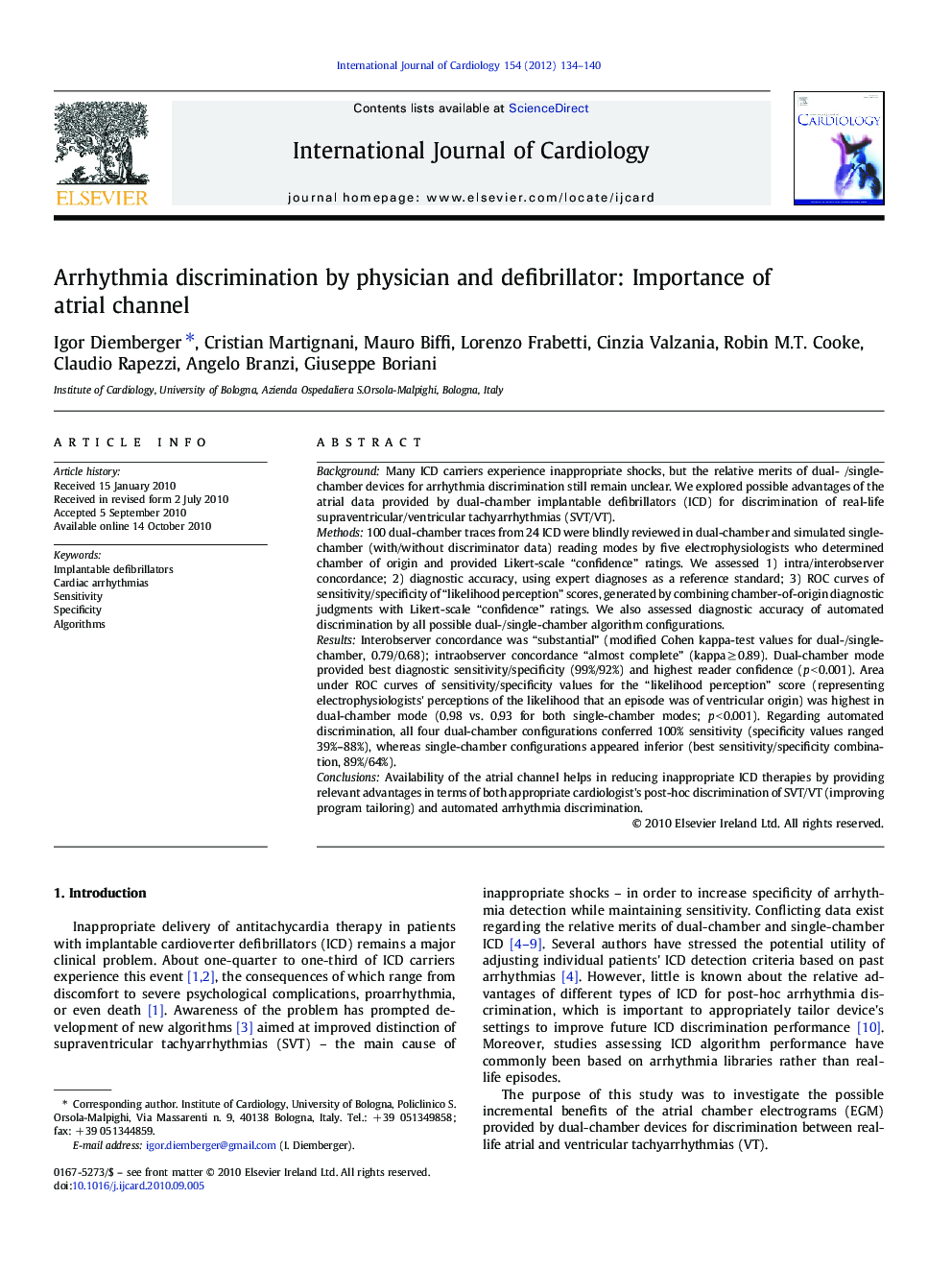| Article ID | Journal | Published Year | Pages | File Type |
|---|---|---|---|---|
| 5977782 | International Journal of Cardiology | 2012 | 7 Pages |
BackgroundMany ICD carriers experience inappropriate shocks, but the relative merits of dual- /single-chamber devices for arrhythmia discrimination still remain unclear. We explored possible advantages of the atrial data provided by dual-chamber implantable defibrillators (ICD) for discrimination of real-life supraventricular/ventricular tachyarrhythmias (SVT/VT).Methods100 dual-chamber traces from 24 ICD were blindly reviewed in dual-chamber and simulated single-chamber (with/without discriminator data) reading modes by five electrophysiologists who determined chamber of origin and provided Likert-scale “confidence” ratings. We assessed 1) intra/interobserver concordance; 2) diagnostic accuracy, using expert diagnoses as a reference standard; 3) ROC curves of sensitivity/specificity of “likelihood perception” scores, generated by combining chamber-of-origin diagnostic judgments with Likert-scale “confidence” ratings. We also assessed diagnostic accuracy of automated discrimination by all possible dual-/single-chamber algorithm configurations.ResultsInterobserver concordance was “substantial” (modified Cohen kappa-test values for dual-/single-chamber, 0.79/0.68); intraobserver concordance “almost complete” (kappa â¥Â 0.89). Dual-chamber mode provided best diagnostic sensitivity/specificity (99%/92%) and highest reader confidence (p < 0.001). Area under ROC curves of sensitivity/specificity values for the “likelihood perception” score (representing electrophysiologists' perceptions of the likelihood that an episode was of ventricular origin) was highest in dual-chamber mode (0.98 vs. 0.93 for both single-chamber modes; p < 0.001). Regarding automated discrimination, all four dual-chamber configurations conferred 100% sensitivity (specificity values ranged 39%-88%), whereas single-chamber configurations appeared inferior (best sensitivity/specificity combination, 89%/64%).ConclusionsAvailability of the atrial channel helps in reducing inappropriate ICD therapies by providing relevant advantages in terms of both appropriate cardiologist's post-hoc discrimination of SVT/VT (improving program tailoring) and automated arrhythmia discrimination.
